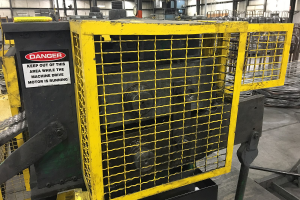Here we go again – OSHA on wrong path with injury prevention proposal
OSHA has come out with more details about its proposed Injury and Illness Prevention Program and it’s now clear to me that what could have been a good idea is headed down the wrong path.
I agree that OSHA should require every company within its jurisdiction to have a safety and health program. But I think that the guidelines should be broad and that the programs should be judged based on the companies’ safety performance. These programs should require total management commitment and employee involvement, and should hold both workers and managers accountable for following safe work procedures.
What the federal government should not do is lay down detailed specifications for how safety and health programs should be constructed. And that is exactly what OSHA is proposing to do.
Businesses vary so much in their operations that it is unrealistic to think that federal specifications will serve the cause of health and safety. Companies need the flexibility to build programs that match their own circumstances.
Here is an excerpt from what OSHA says it has in mind for a proposed Injury and Illness Prevention Program, which it is calling I2P2 for short:
“Based on OSHA’s experience, the agency believes that an I2P2 rule would include the following elements:
“1. Management duties (including items such as establishing a policy, setting goals, planning and allocating resources, and assigning and communicating roles and responsibilities);
“2. Employee participation (including items such as involving employees in establishing, maintaining and evaluating the program, employee access to safety and health information, and employee role in incident investigations);
“3. Hazard identification and assessment (including items such as what hazards must be identified, information gathering, workplace inspections, incident investigations, hazards associated with changes in the workplace, emergency hazards, hazard assessment and
prioritization, and hazard identification tools);
“4. Hazard prevention and control (including items such as what hazards must be controlled, hazard control priorities, and the effectiveness of the controls);
“5. Education and training (including items such as content of training, relationship to other OSHA training requirements, and periodic training); and
“6. Program evaluation and improvement (including items such as monitoring performance, correcting program deficiencies, and improving program performance).”
Your comments are most welcome.



3 Comments
Will y’all be participating in the OSHA I2P2 workshops? I will be at the DC one in late June. Hope to see you there. Norman
Success hinges on just how prescriptive OSHA gets in its rule making. Great article and thanks for the link!
This could cost employers up to $3k per employee!
Now is not the time to give people more reasons NOT to hire.
We are over taxed and over regulated already.
Enough!